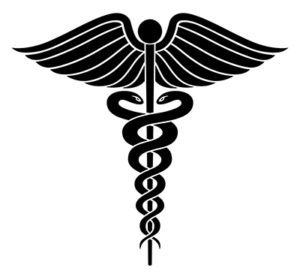Real Healthcare Reform Has Health as the Primary Goal

In 1986, shortly after starting my 12-day live-in program at St. Helena Hospital, I had several meetings with representatives from major medical insurance companies with the intention of having my treatment, called The McDougall Program, paid for by a patient’s medical insurance. I prepared portfolios with scientific articles showing how a low-fat, starch-based diet worked better than traditional treatments for most chronic aliments. For example, I provided research on how diet would stop chest pain (angina) in people with coronary artery disease and reverse their underlying atherosclerosis. Also included were multiple studies demonstrating the failure of bypass surgery to save lives in the vast majority of people. The financial figures showed diet-therapy in our residential program would cost $5000 versus bypass surgery at $45,000 (if all went well). I expected a favorable response from the representatives of these companies.
The first reply was from a claims manager, ‘We’re not interested; this is not the kind of program we can include in our coverage.’ I asked, ‘Why?’ He said, ‘In order to stop the chest pains by your methods you have to get the patients’ cooperation; patients must change their diets, and I don’t believe they will. For the bypass surgeon to stop the chest pains all he has to do is get the patient to lie down on the operating room table. No will power necessary.’
I pressed on with my arguments. ‘But there are some patients who would much rather eat oatmeal, minestrone soup, and bean burritos and go for a daily walk, than expose the inside of their chest to stale operating room air, and risk death and brain damage. Don’t you think they should be given an option, especially with the savings for your company?’
We went back and forth for a few more minutes and then he made his position irrefutably clear to me. Obviously frustrated by my persistence he said, ‘You don’t get it, McDougall, you don’t understand the business. We take a piece of the pie and the bigger the pie the more we get. An estimated 30% of the premiums collected from the insured, their employers, and the taxpayers go to administrative costs, including the salary of these insurance company employees who were denying payment for the McDougall Program.
Healthcare Disaster Facts
The U.S. spends twice as much as other industrialized nations on health care; about $7,129 per person annually, yet U.S. citizens are in overall worse health than those of most other nations. In the U.S., many families spend more on health care than they do on housing or food. In 2008, 17% of Gross Domestic Product (GDP) was spent on medical care. Even so, about 45.7 million people are without health coverage and millions more are inadequately covered. Illness is the leading cause of personal bankruptcy in the U.S.
Partial Solutions: Single Payer vs. Obamacare vs. Private Insurance Companies
There are several proposed solutions for this mess. The Physicians for a National Health Program support a single payer national health insurance. They are essentially recommending an expanded and improved version of traditional Medicare. Benefits would primarily be from cutting the huge administrative costs of private medical insurance companies. President Obama is proposing many healthcare reforms and one of the more controversial is a ‘public option’—a government-run program for people unhappy with private insurers. The major insurance companies are fighting all plans that would cause drastic changes, and believe the forces of the marketplace will solve current problems, as long as they don’t have to compete with a ‘public option.’ A government-run medical insurance plan seems to be very popular with the public.
Each faction talks about cutting administrative costs, electronic records, more preventative care, supporting more research for comparing treatments, and spending more money on cancer research and other special interests. These are tried and failed methods, and/or band-aids, at best. Serious savings, prevention, and the curing of disease will only be accomplished when an insurance company, private or public, makes its primary battlefront the major cause of people’s illnesses: the food.
A Medical Insurance Option Based on McDougall’s Medicine
Twenty-five years ago I met Conrad Schmitt, the founder of Medmark Health Plan in Phoenix, Arizona. This medical insurance company was focused on cutting healthcare costs by providing alternative care, including diet-therapy. Unfortunately, the community physicians who were providing the patient care for Mr. Schmitt’s company undermined the intentions of its founder. These traditionally trained doctors continued to use very expensive, high-tech examinations and ineffective treatments (medications, radiotherapy, and surgery) for chronic diseases, rather than simpler, less harmful, and often more effective, approaches that Mr. Schmitt was proposing to cut costs and to return people to better health.
Our work together eventually led to a 3-year trial at Blue Cross/Blue Shield of Minnesota. Between 1999 and 2001 we were able to show remarkable health benefits for their employees: weight loss, reduction in cholesterol, blood pressure, and sugars; relief of indigestion, constipation, arthritis, etc. We were also able to document a 44% reduction in healthcare costs after one year based on the insurance company’s own claims data. After these extraordinary results we expected Blue Cross/Blue Shield to get solidly behind us and to begin reforming healthcare. I had forgotten my earlier lesson: they take a piece of the pie—there was no real incentive to slow the growth of medical care—at least by the methods we were offering. Over the past decade the business of Blue Cross/Blue Shield, and all other private insurance companies, has skyrocketed. Along with their growth, their subscribers have grown too: fatter and sicker with bigger bags filled with more pills and potions.
The McDougall Private Healthcare Plan
The McDougall Healthcare Plan lives up to its name. The focus: making subscribers healthier. Key elements include:
1) The Marketing Program: Business will be solicited from the public—the ones really interested in their health. Employees will be able to select this plan among the many traditional ones offered by their employers. The McDougall advantage: real health through diet and lifestyle medicine, and conservative medical care.
2) The Doctors Program: Medical care will be provided by primary care physicians trained and employed fulltime by the McDougall Healthcare Plan. In this way physicians will be ‘onboard’ with the Plan and not be undermining the Plan’s efforts to provide effective therapies at reasonable costs (as happened with Medmark). The fundamental efforts of all the professionals will be directed toward diet change, because food is the major health problem in the US.
3) The Behavior Programs: Trained primary care doctors, psychologists, dietitians, nurses, chefs, personal trainers, counselors, and many other experts will focus on correcting people’s destructive food, smoking, alcohol, illicit and prescription drug habits with rehabilitation programs. Several levels of health education will be offered from outpatient cooking classes to intensive medically supervised, live-in programs. When appropriate, cooks will prepare and provide meals to sick people. (It could be cheaper than an ambulance ride to the hospital—$500 to $1000.)
4) The Eating Out Program: Most people eat out these days. The McDougall Healthcare Plan will make contracts with restaurants and grocery markets all over the country to prepare delicious McDougall-style starch-based meals.
5) The Exercise Program: Personal trainers in private athletic clubs across the country will evaluate people and then teach and supervise their exercise sessions. The McDougall Healthcare Plan will pay for this service. Only trainers supporting the nutritional principles of a starch-based diet will be hired.
6) The Real Head Start Program: Women will be taught to follow a starch-based diet for the healthiest pregnancy. Every effort will be made to have babies breastfed exclusively for six months and then partially breastfed for two years. Lactation consultants will be full time employees of the McDougall Healthcare Plan. McDougall-trained dietitians will consult with daycare centers and local schools.
7) The Rewards Program: The financial return is hard evidence the McDougall Healthcare Plan works:
a) People in good health, based on various risk factors, eating habits, exercise habits, personal habits, and also those people making serious efforts to improve their health by attending educational programs, exercising, reforming bad habits, and eating McDougall meals will be rewarded by reductions in their premiums.
b) Physicians will be paid bonuses based on results of improving the health of their patients, and secondarily by reducing their prescriptions for useless tests and ineffective treatments.
c) Principals, administrators, other employees, and shareholders will share in the profits.
d) Employers providing the Plan to their employees will reduce the cost of their healthcare benefits package by 25% the first year they are with the McDougall Healthcare Plan and even more in future years based on their utilization of medical services and employee health.
8) The Medication and Surgery Programs: As the last resort, McDougall-trained primary care doctors will prescribe medications and surgeries proved worthwhile. Most of these prescriptions will be able to be administered ‘within house.’
9) The Specialist Care Program: Any specialist services (like cardiologists, neurologists, nephrologists, surgeons, etc.) will be contracted from outside the McDougall Healthcare Plan. When such services are required then a McDougall-trained primary care doctor will remain closely involved in order to protect the patient from unnecessary, potentially harmful treatments, such as unwarranted heart surgery and aggressive medication usage in type-2 diabetes.
10) The Emergency Care Program: Non-emergency, but urgent, care will be managed by McDougall Healthcare Plan doctors at their office facilities. Real emergencies will be handled by local hospital-based emergency rooms.
11) The Hospital Care Program: When necessary members of the McDougall Healthcare Plan will be admitted to designated hospitals that have a working relationship with the Plan. A McDougall-trained primary care doctor will remain closely involved in order to protect the patient from unnecessary, potentially harmful treatments while hospitalized.
12) The Research Program: Comparative effectiveness research will be ongoing in order to document the value of the McDougall Healthcare Plan.
Why Isn’t Kaiser Permanente Already On Board?
The first lecture I ever gave to a meeting of medical doctors was at Kaiser Hospital in Honolulu in 1978. I began by saying, ‘You people have more to gain financially by what I have to say in the next hour than any other medical business. You get to collect the premiums and keep the money by making your patients healthier.’ Their response was overwhelming. They invited me back for many more presentations. Kaiser Permanente, located in several regions of the US is the most progressive of all insurers. Their own doctors in their own medical offices and hospitals provide their healthcare. The Oakland California hospital has a health food store called the Food Mill-Food Farm’acy store. Kaiser Permanente focuses on prevention, patient education, and cost control. In my area, Northern California, using their progressive approaches, they have captured 70% of the market. However, as a company they have still failed to seriously address the country’s biggest healthcare problem: the food. I know of no Kaiser doctors who seriously use diet-therapy; rather they remain focused on treating risk factors (cholesterol, blood pressure, blood sugar, etc.) with pharmaceuticals, and prescribing ineffective surgeries (angioplasty and bypass being the most common and expensive examples) for chronic dietary diseases.
Change is difficult for everyone, and especially for physicians, who are known for their conservative natures. We were trained to use treatments that have been proven to not work and to hurt patients. This medical school education sticks firmly in our brain matter. We have received no instruction in diet-therapy and we were never taught to refer patients to a lifestyle medicine program. Physicians are afraid to be criticized by our colleagues for doing anything different. The best way to avoid a successful lawsuit by a patient is to perform ‘the community standard of practice.’ Right or wrong, the best defense is to treat your patients like every other doctor treats them. One of the greatest barriers is personal habits, the best educated doctors, with access to the most reliable scientific research, cannot see beyond their own dinner plates.
The Last Corner In Town: The McDougall Healthcare Plan
In 1978, the day after my graduation from my internal medicine residency at the University of Hawaii, I told my former boss, Irwin Schatz, MD, that 80% of the disease I care for is caused by the rich Western diet and most of that sickness can be greatly benefited and/or cured with a change to a starch-based diet. The disgruntled look on his face made me think he would have torn up my diploma if he had had the chance. More than 30 years have passed. President Obama now warns, ‘The greatest threat to America’s fiscal health is not Social Security. It’s not the investments that we’ve made to rescue our economy during this crisis. By a wide margin, the biggest threat to our nation’s balance sheet is the skyrocketing cost of health care. It’s not even close.’ I have learned much over these years and I am ready to try again. I am just waiting for the phone to ring from President Obama, any one of the over-bloated private medial insurance companies, or a large self-insured company (like Ford Motor, Cisco Systems, IBM, Safeway, or Whole Foods Markets). Anything short of real healthcare reform will mean financial failure for the country and worsening health for the people of our nation, at least.
Recommended Articles

McDougall Quick-Start Program: FREE

Securing Respectful Medical Care






